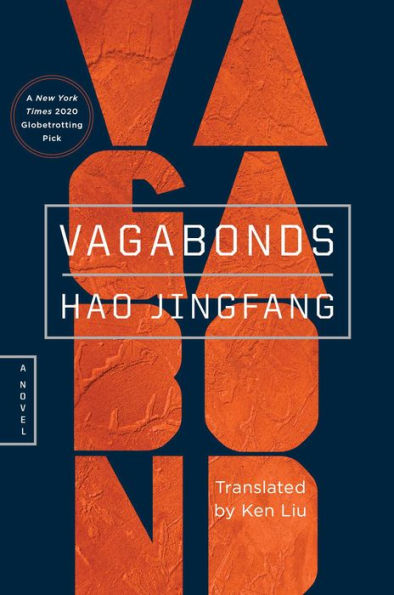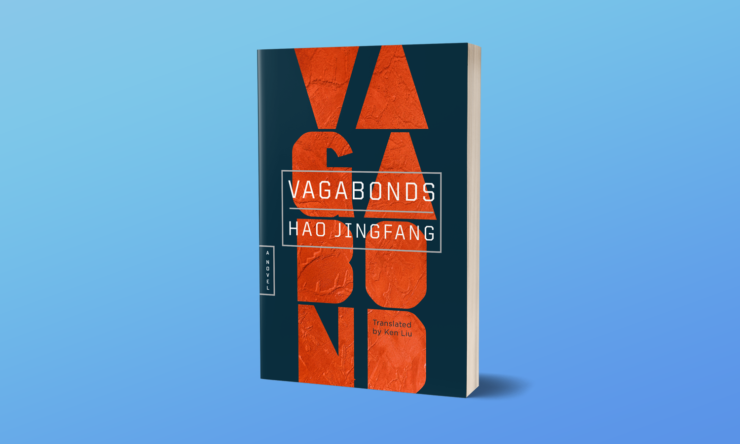What happens when nation-states have expanded to a planetary scale? For a particular corner of science fiction, this question is a monumentally gripping one. James S.A. Corey’s Leviathan Wakes, with its vision of a futuristic Earth and Mars perennially on the verge of war, is one high-profile example of this; Ursula K. Le Guin’s The Dispossessed, which embodies some elements of Cold War conflicts on a planetary level, is another.
Reading Hao Jingfang’s Vagabonds—translated into English by Ken Liu—I found myself thinking of a book that occupied some middle ground between Corey’s and Le Guin’s. In some ways, Hao’s novel fits that bill: It’s set a little less than 200 years in the future, and explores a group of characters on the periphery of an ongoing ideological conflict between Earth and a newly-independent Mars. As with Corey’s book, the threat of war hangs over the proceedings; as with Le Guin’s, the Earth/Mars conflict contains elements of modern-day ideological debates.
While Hao’s novel does overlap with both of these works, Vagabonds also takes plenty of time to grapple with a question that goes unspoken in a lot of science fiction; namely, a serious consideration of what art might look like at this point in the future, and how advances in technology might have transformed certain disciplines. Luoying, the novel’s protagonist, is a dancer; another major character in the novel, Eko Lu, is a filmmaker. And while Vagabonds has certain frustrating elements, Hao’s measured consideration of what film and dance might look like in the near future make for some of this novel’s most fascinating elements.
Buy the Book


Vagabonds
The novel’s Prologue ends with an ominous statement: “This is the tale of the fall of the last utopia.” Vagabonds is a novel of ideas more than one of action, though—readers seeking pyrotechnics and epic societal collapses might be disappointed. The Martian society described in the novel is one centered around ateliers, which help to determine elements of a citizen’s daily life. Luoying’s own dilemma is laid out neatly:
An atelier gave one an identification number, established the credentials for acquiring the necessities of life and for expressing and living a life. All jobs, passports, documents, and credits were linked to the number. She had not logged in yet; it was as though she didn’t exist, hadn’t yet returned from Earth.
Vagabonds is set in the aftermath of a number of life-changing events—chief among them being the return of a group of young Martian citizens who spent several years living on Earth. This was a maneuver designed to ease relations between the two planets; instead, Luoying finds herself grappling with the flaws and virtues of both societies. In the novel’s first third, a subplot involving a teacher of Eko’s with a connection to Luoying’s family deepens these themes, offering up the sense of certain individuals who aren’t perfectly at home in either society.
Besides the novel’s discussion of what films might look like in the near future, Hao makes another thematically weighty invocation that may delight cinephiles. One building, which Eko visits early on in the novel, is named for the Russian filmmaker Andrei Tarkovsky. Tarkovsky might be best-known for his gloriously surreal films like Stalker and Solaris, but he also—like Luoying here—was an artist who never quite felt at home in the Soviet Union or the West. His memoir Sculpting in Time is a fascinating look at artistic dedication and perseverance—both qualities that resonate with Luoying’s own quest here.
What that amounts to is a journey of self-discovery, both in terms of her own relationship to art and her own connection to her roots. Luoying’s grandfather is politically powerful—and whether or not his power has been used for noble ends is a running concern throughout the book.
Where Vagabonds impresses is in its handling of art and inspiration, and in its exploration of what privilege might look like in a radically different context. Some of the details of the setting occur in passing: The question of how humans are living on Mars is answered, as are the biological effects of Martian life—but both come up in passing, rather than directly. That’s a welcome and natural choice, but there were also moments in Vagabonds where its low-key, lived-in qualities kept it frustratingly subdued.
That’s the paradox of taking such an immersive approach: For all that it leaves the reader with a sense of the quotidian elements of a futuristic society, it also showcases some of the less-thrilling elements of that same society. But the big ideas at the heart of this novel are enough to make it a worthwhile read—and a thought-provoking speculative work in general.
Vagabonds is available from Saga Press.
 Tobias Carroll is the managing editor of Vol.1 Brooklyn. He is the author of the short story collection Transitory (Civil Coping Mechanisms) and the novel Reel (Rare Bird Books).
Tobias Carroll is the managing editor of Vol.1 Brooklyn. He is the author of the short story collection Transitory (Civil Coping Mechanisms) and the novel Reel (Rare Bird Books).










